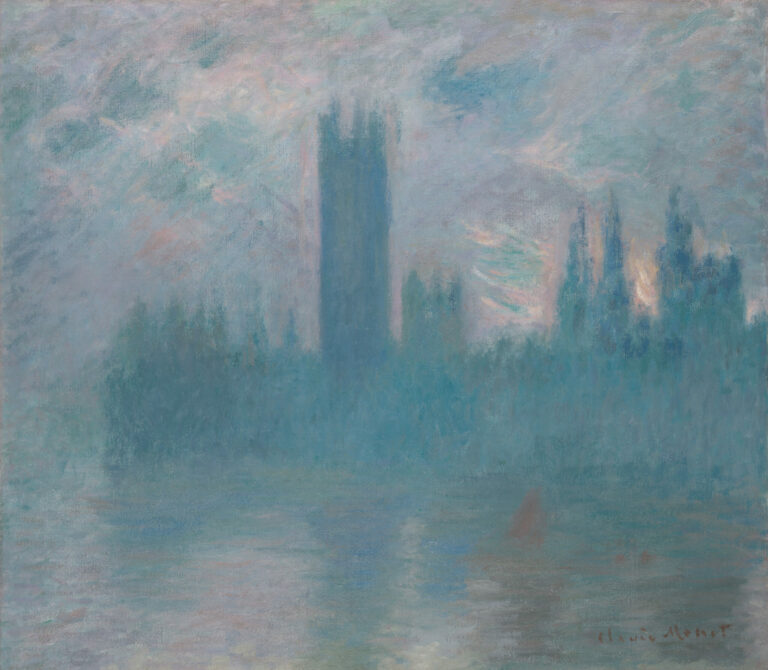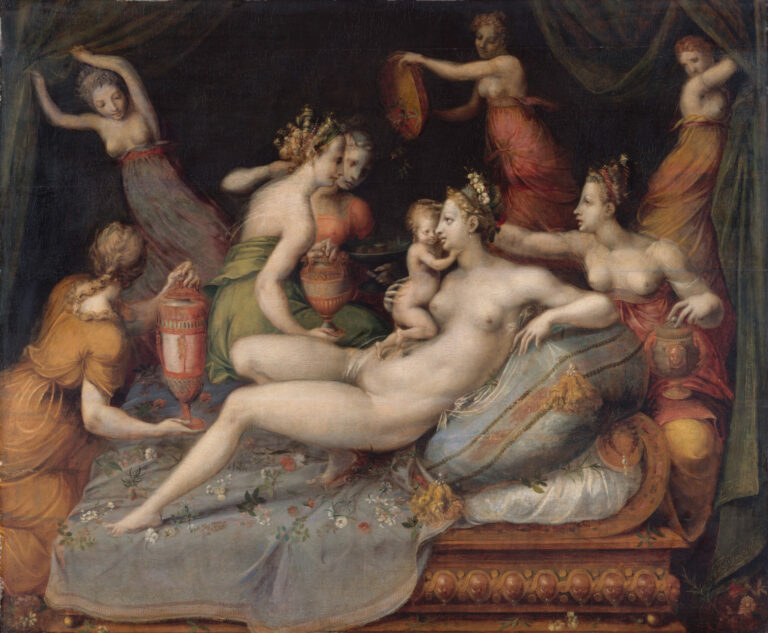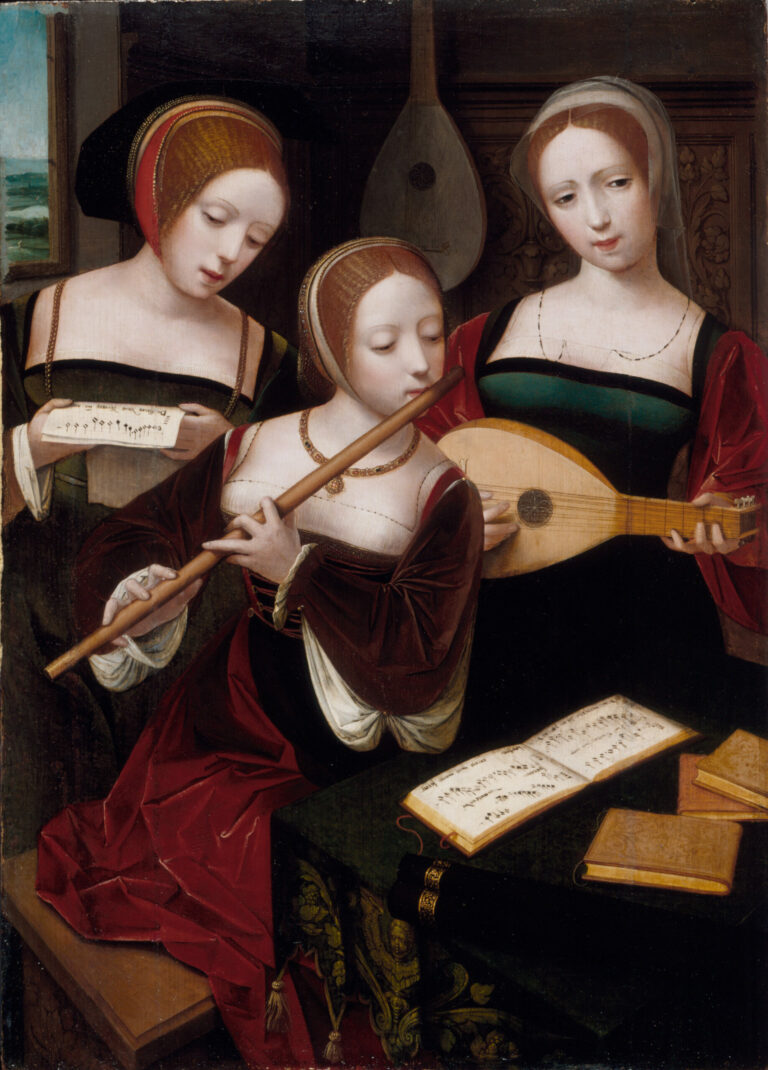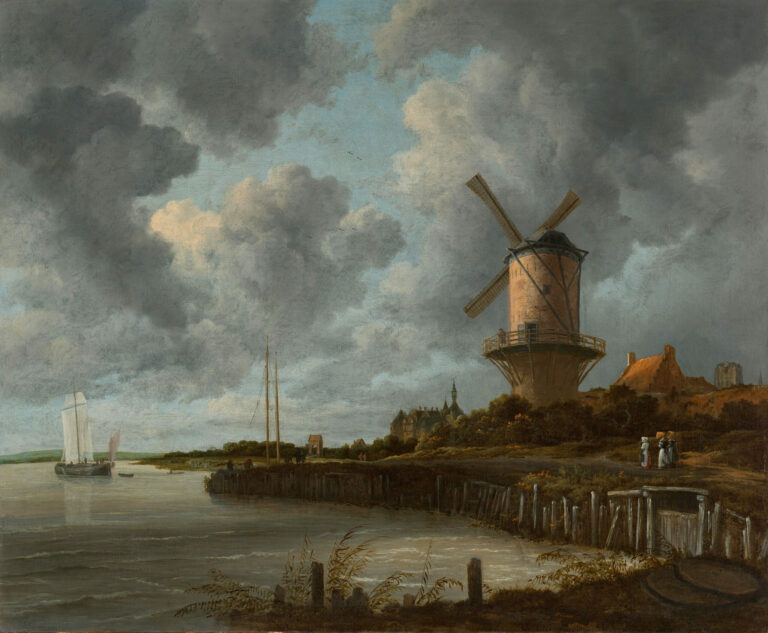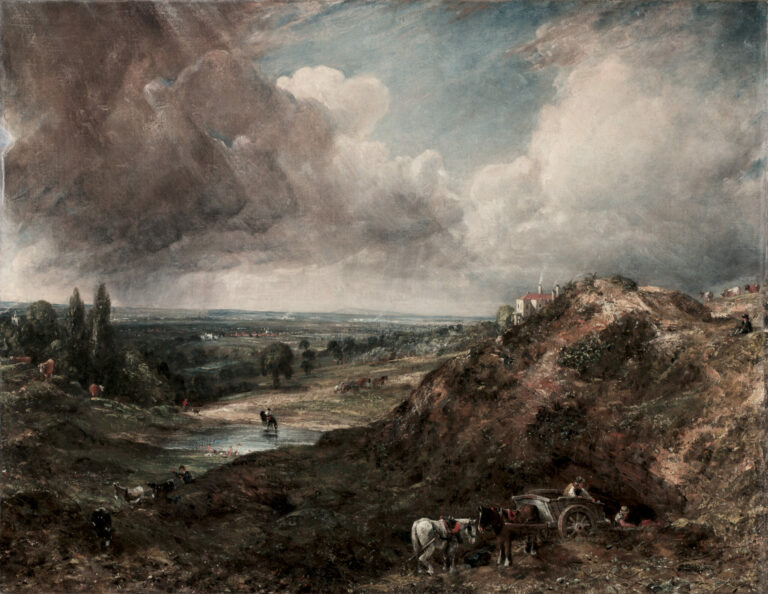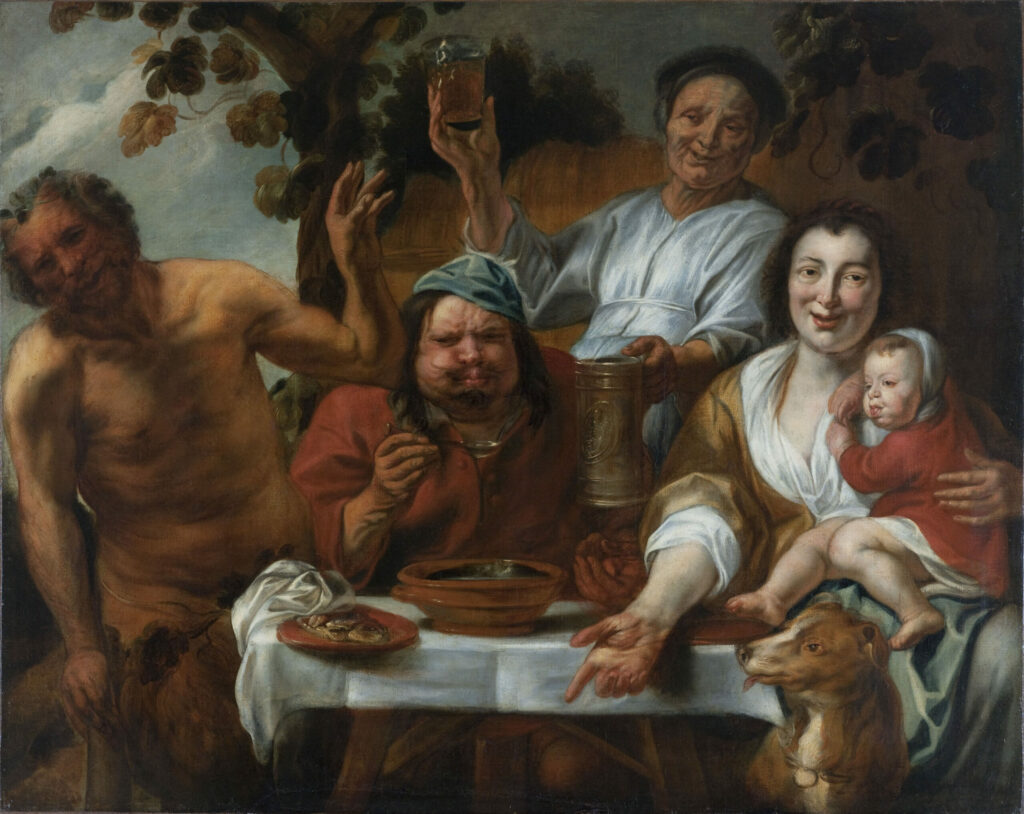
This painting is a workshop copy after Jacob Jordaens, whose original version resides in the collection of the Royal Museums of Fine Arts in Brussels. It brilliantly illustrates a scene from Aesop’s Fable LXXIV, executed in a masterful composition typical of the Flemish Golden Age.
The work depicts a lively feast where figures arranged around a white-draped table embody the joie de vivre cherished by Flemish painters. At the center, a man in red with a green cap blows to cool his hot dish, while a satyr leans in from the left. The presence of a young woman with a child and a dog adds a touch of domestic tenderness to this Bacchic scene.
The play of light on flesh and fabrics, the richness of coloration, and the naturalism of expressions demonstrate remarkable technical mastery characteristic of the Flemish school.
Further Context
- The Satyr and the Peasant, workshop copy after Jacob Jordaens, c. 1644/1645
- 124 x 153 cm
- Paris Musées, Petit Palais, Museum of Fine Arts of the City of Paris
- https://www.parismuseescollections.paris.fr/fr/petit-palais/oeuvres/le-satyre-et-le-paysan
Jacob Jordaens (1593-1678) was a prominent Antwerp painter of the 17th century, alongside Rubens and Van Dyck. Unlike his illustrious contemporaries, he rarely left Antwerp, his native city, where he developed a style blending popular realism with baroque exuberance.
Initially trained as a tapestry cartoonist, he was admitted as a master to the Guild of Saint Luke in 1615. His ability to represent genre scenes with extraordinary vitality, while incorporating mythological or allegorical elements, established his reputation. The workshop he directed was one of the most productive in Antwerp, creating numerous versions of his most popular compositions.
The Man and the Satyr (Aesop)
A Man and a Satyr became friends, and determined to live together. All went well for a while, until one day in winter-time the Satyr saw the Man blowing on his hands. “Why do you do that?” he asked. “To warm my hands,” said the Man. That same day, when they sat down to supper together, they each had a steaming hot bowl of porridge, and the Man raised his bowl to his mouth and blew on it. “Why do you do that?” asked the Satyr. “To cool my porridge,” said the Man. The Satyr got up from the table. “Good-bye,” said he, “I’m going: I can’t be friends with a man who blows hot and cold with the same breath.”

